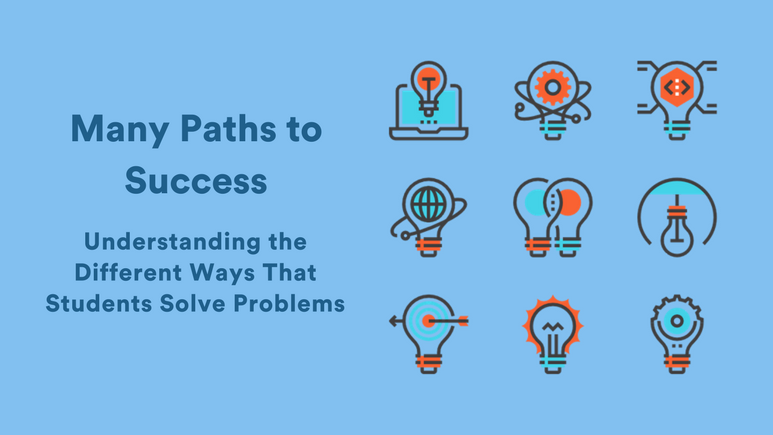
Even the most straightforward of math problems can be approached in different ways.
For example, say you want students to find the product of 14 x 3.
They could write out the problem and cross multiply.
They could also mentally multiply 10 by 3 and 4 by 3 and add them together.
If they’ve memorized their times tables and know that 12 x 3 is 36, they could merely add the product of 2 x 3 to 36.
They could skip count by threes up until 14.
Sure, some of these approaches might be faster than others, but often times the process of finding an answer is where the real learning takes place.
And when it comes to more complex problems, there might be just as many different approaches in your classroom as there are students.
As a teacher, understanding (and accommodating for) the different ways that students solve problems can help boost autonomy, investment, and performance.
Creative Thinking
To tell students that there is only one way to approach a problem negates the value of creative thinking.
Creative thinking is the ability to look at a problem in many different ways. Creative thinkers are willing to take risks and make mistakes and use the information they have in new ways to arrive at a solution.
Teachers can be thoughtful about fostering creative thinking in their classrooms.
A good place to start? Brainstorming.
Regardless of what sort of problem students are working on, brainstorming is a fantastic way to get their creative juices flowing.
The most important rule of brainstorming is that there are NO wrong answers.
Even if an idea is unrealistic or crazy, the mere act of throwing out ideas without holding back is a great way for students to open their minds to new possibilities.
If students are new to brainstorming, model the process with the whole class a few times. Kids will be amazed how ten minutes of unfiltered collective thought can generate a whole whiteboard worth of innovative ideas.
Critical Thinking
While creative thinking might use a more holistic approach, critical thinking refers to the ability to break a problem down into discrete parts and analyze them.
By sorting, classifying, and comparing information, students can come to understand the individual pieces of a problem with the objective of eventually solving the whole thing.
Encourage students to make connections between a challenging problem and what they already know.
What parts of this question are familiar? How can we relate this to what we’ve learned before?
By drawing students’ attention to what they already know, teachers can help students approach overwhelming problems in a logical way.
Creating Space for Diverse Problem Solving
In order to allow all students to approach a given problem with the best shot at solving it, teachers need to be flexible.
Most students will use some combination of critical and creative thinking to attempt solving a problem.
As much as possible, create space for students to work on and solve problems in ways of their choosing.
For some students, this is likely to mean working with a partner or as part of a team. Plenty of kids process information and learn best through conversation and collaboration.
That doesn’t mean, though, that group work should always be obligatory.
You’re likely to have students in your room who are introverted or merely prefer independent work. For these students, the anxiety of working with classmates they don’t know well can actually inhibit creative and critical thinking.
The most important role that a teacher can play in helping students foster these different problem-solving skills is that of a listener.
Instead of answering students’ questions right off the bat, step back and let students grapple with their confusion.
Where do shadows come from? can be answered with a straightforward response, but students will derive much more meaning from figuring out this answer on their own.
By encouraging students to make observations and connections to answer their own questions you’ll be encouraging both creative and critical thinking.
Remember that just because students don’t follow the same path you would take to answer a question doesn’t mean they’re on the wrong track. When it comes to problem-solving, the process is just as important as the product.



Leave a Reply